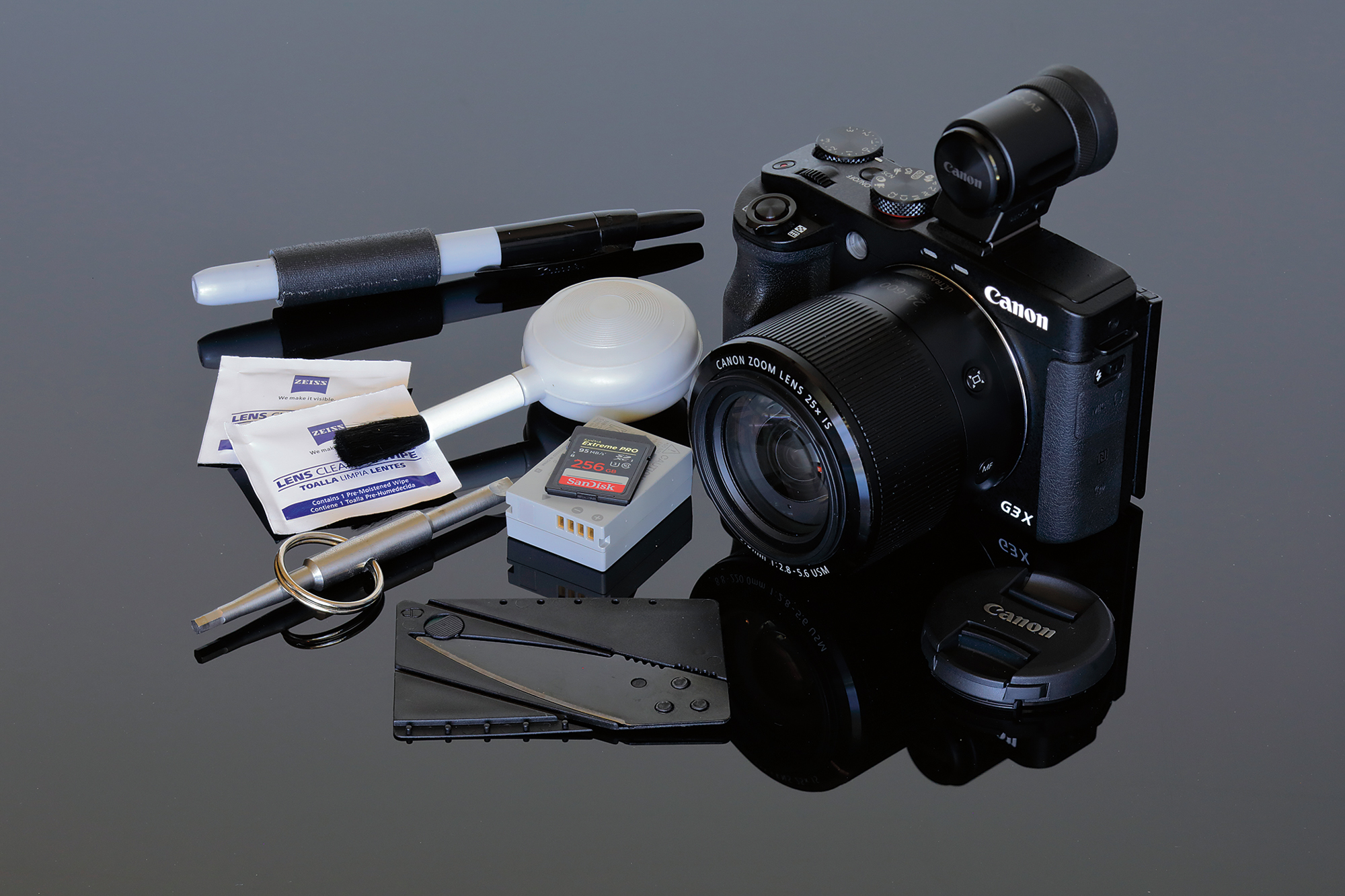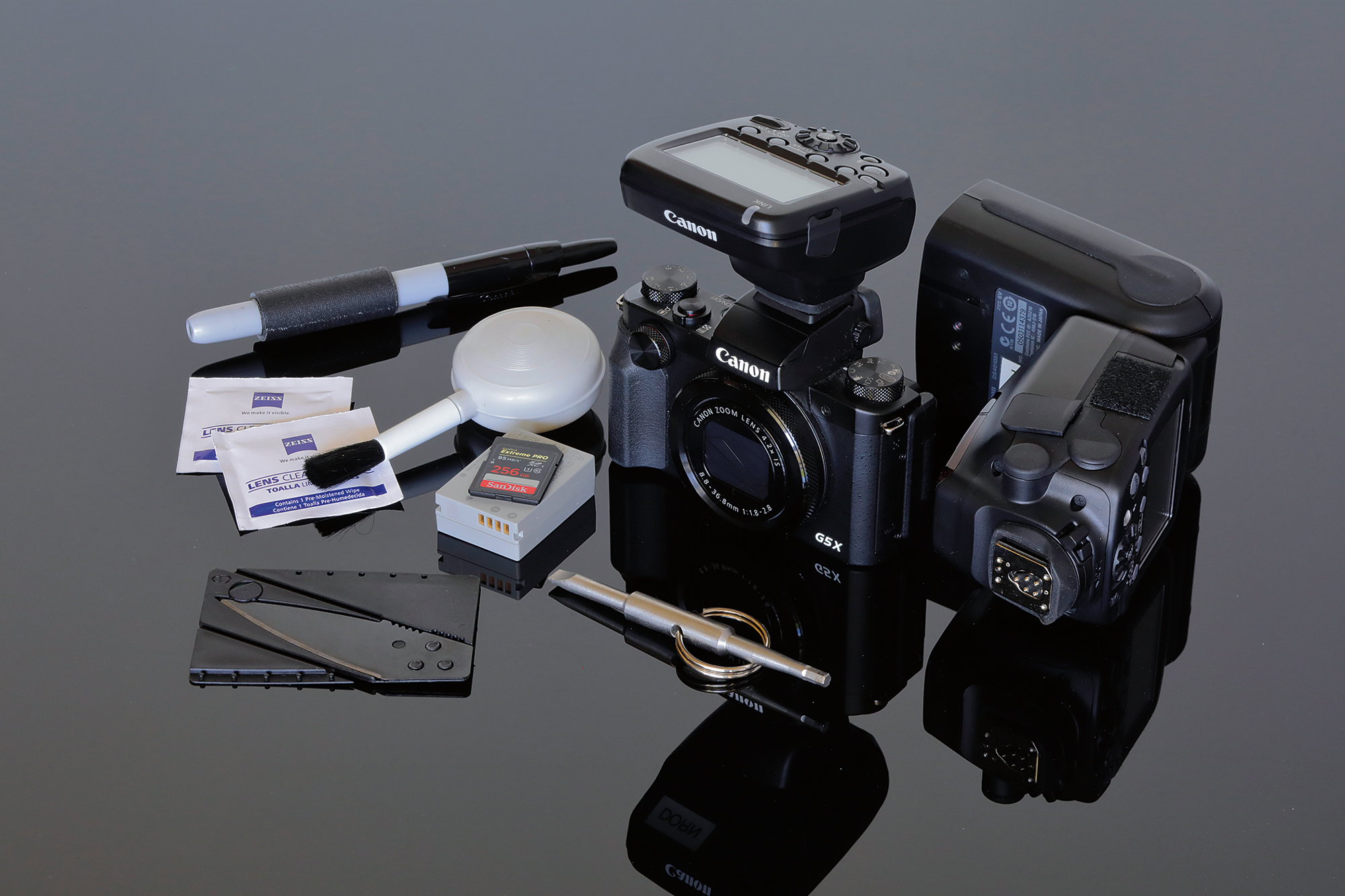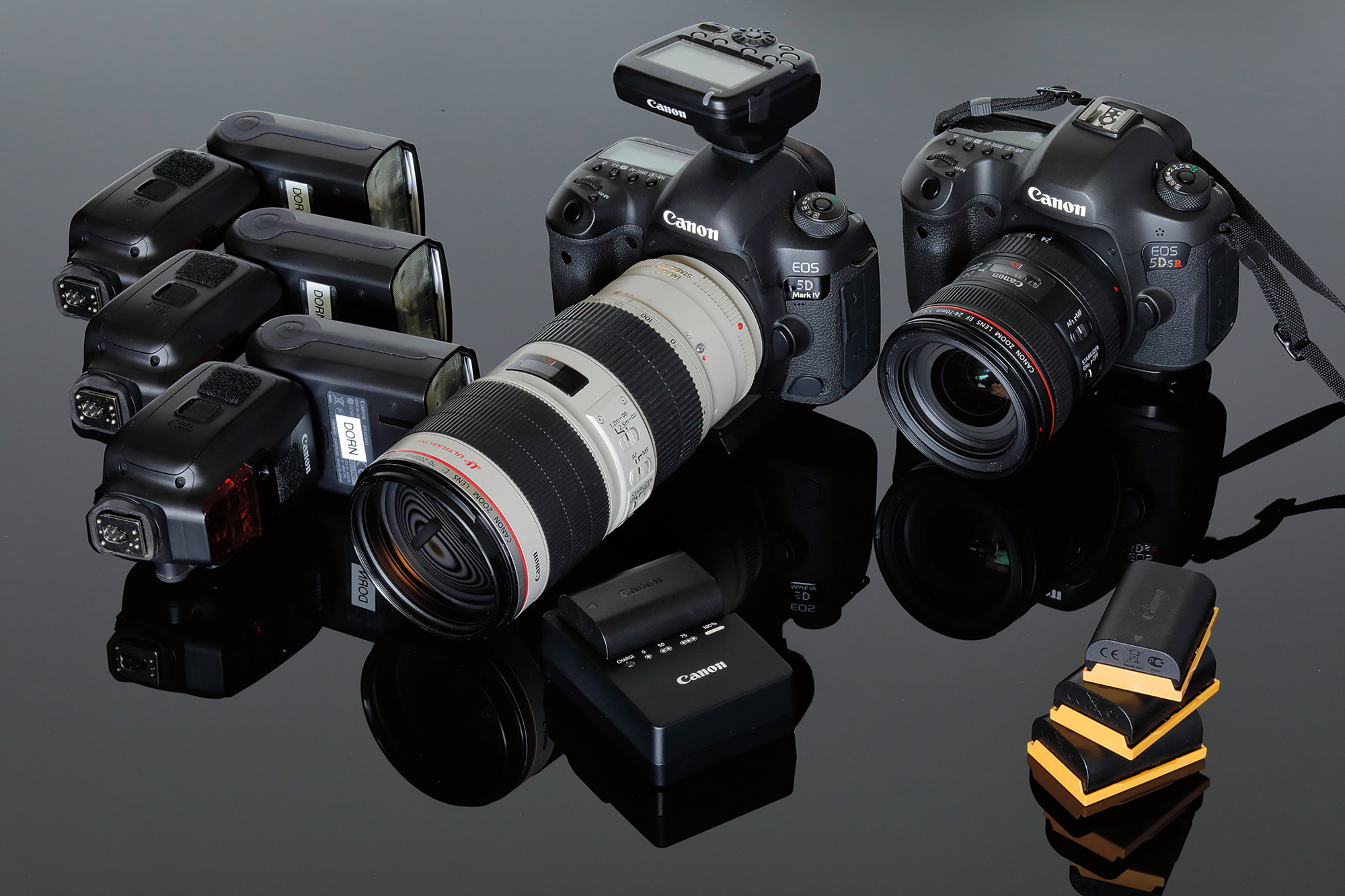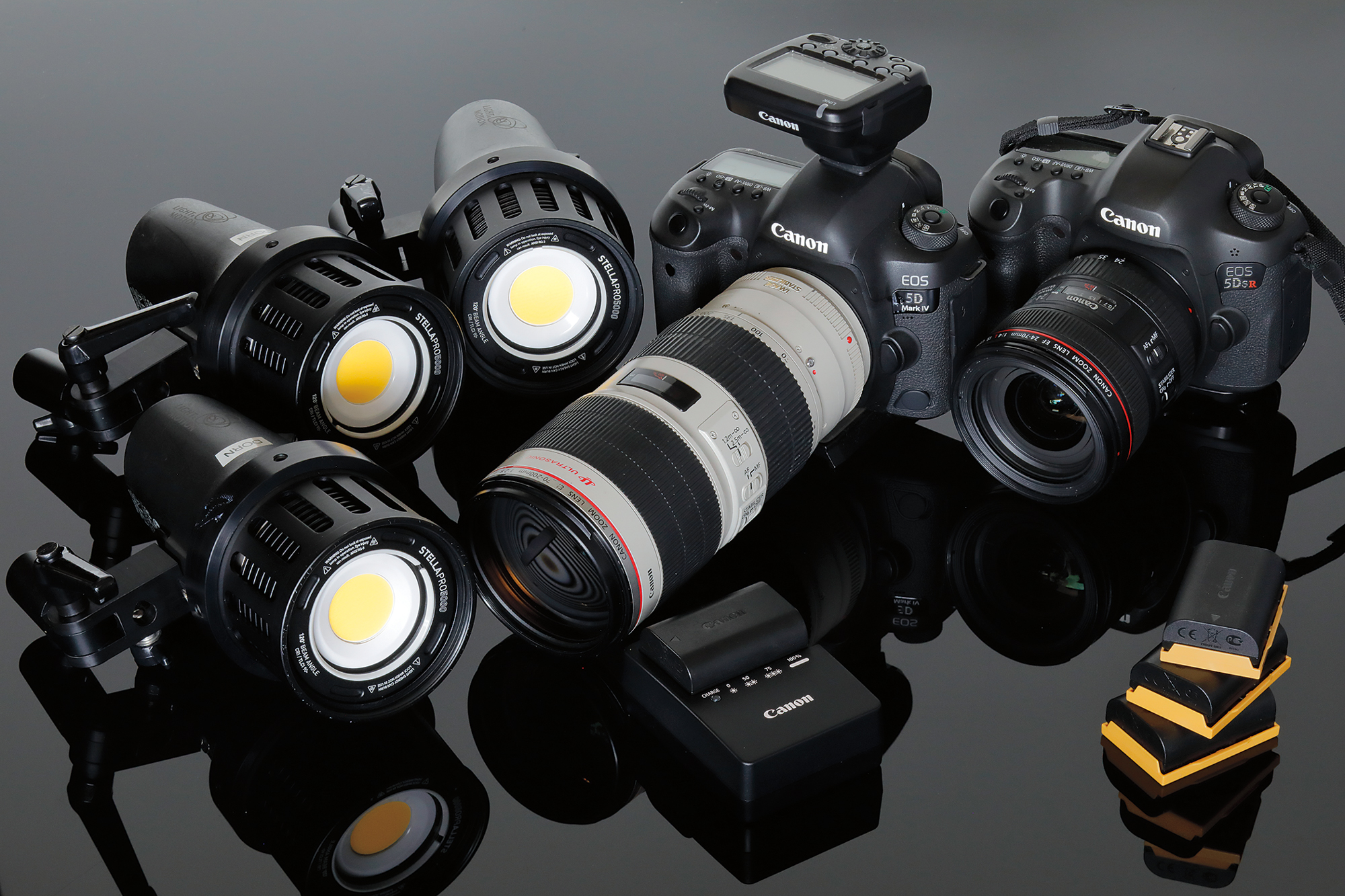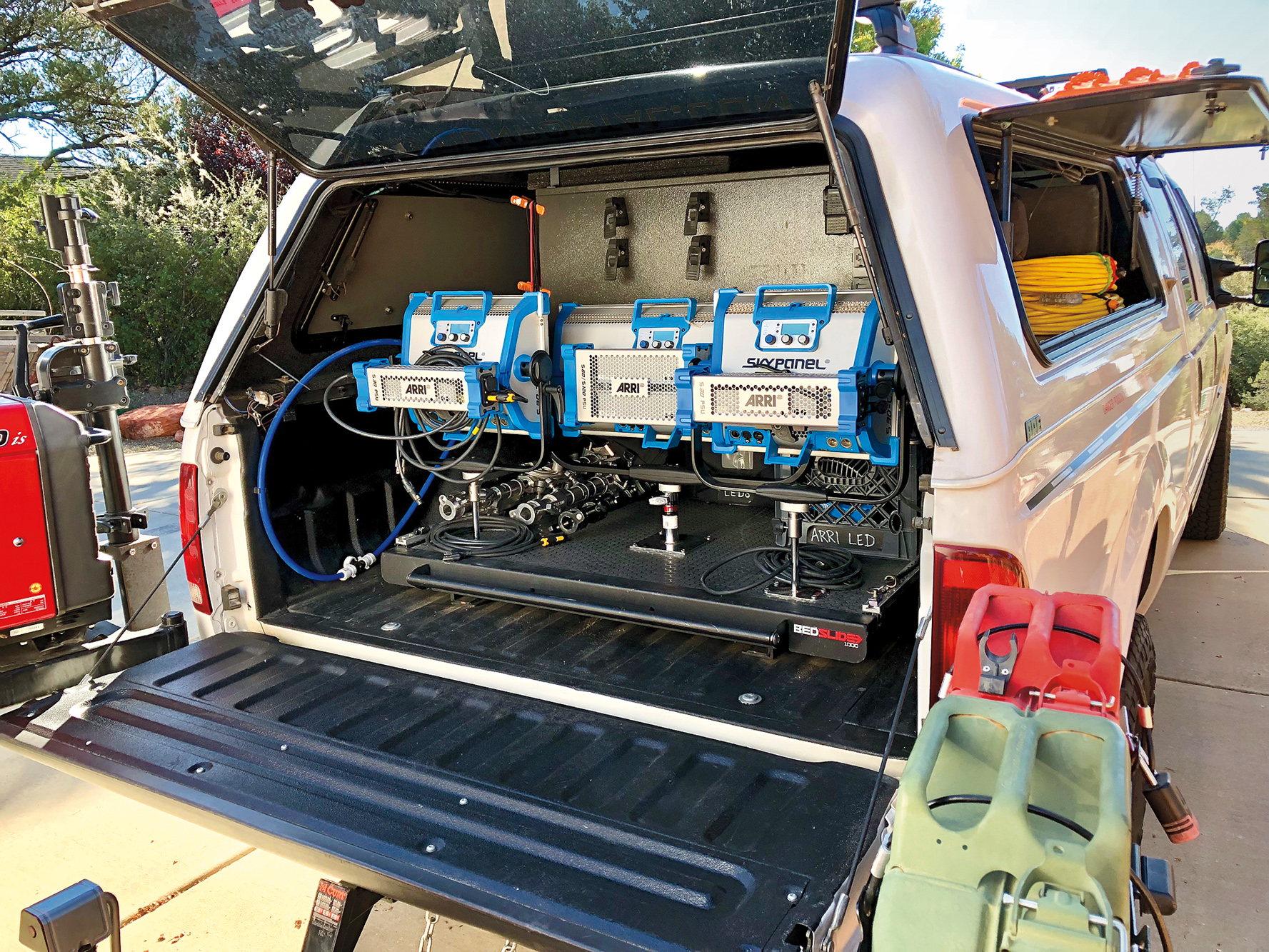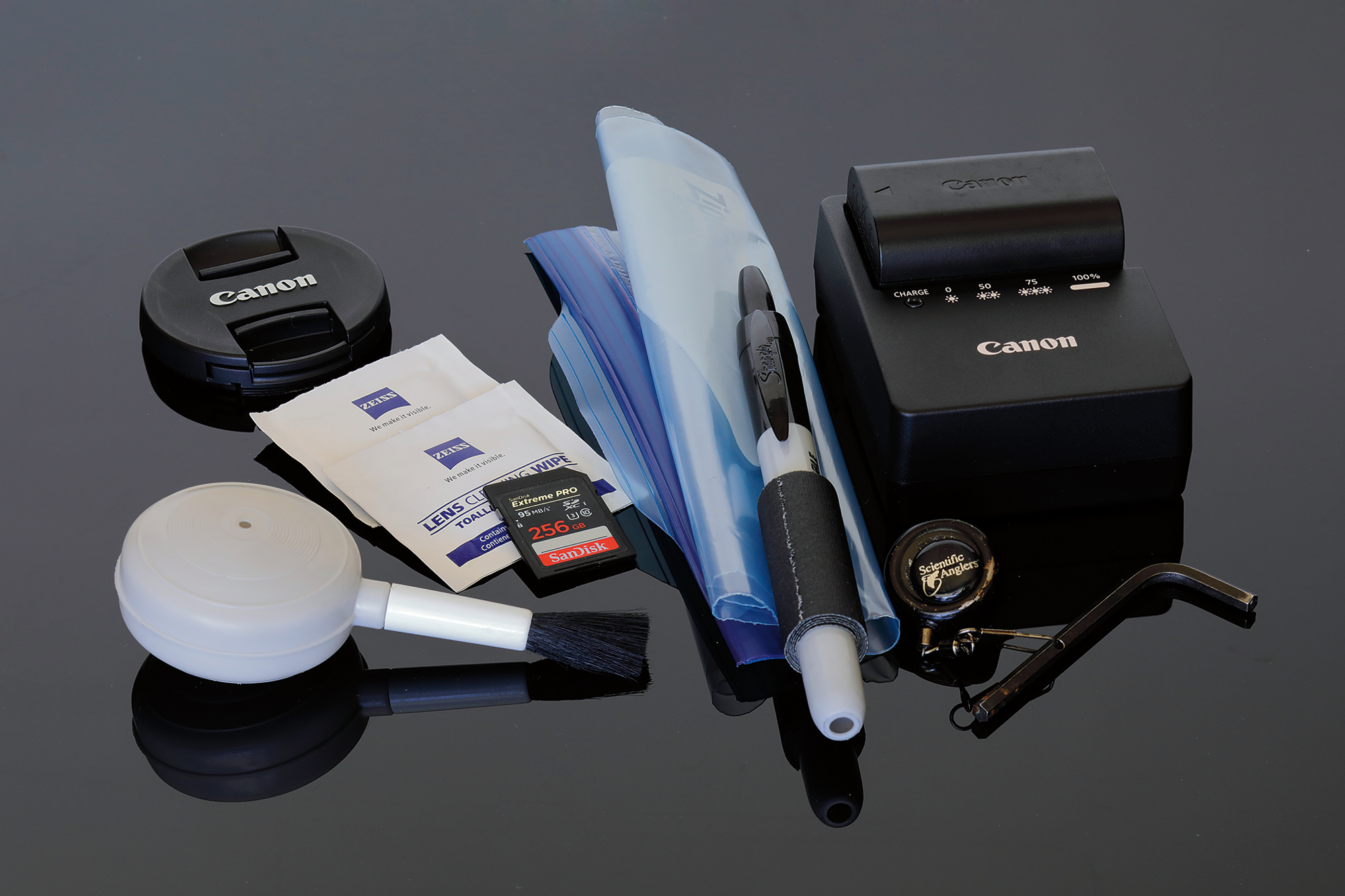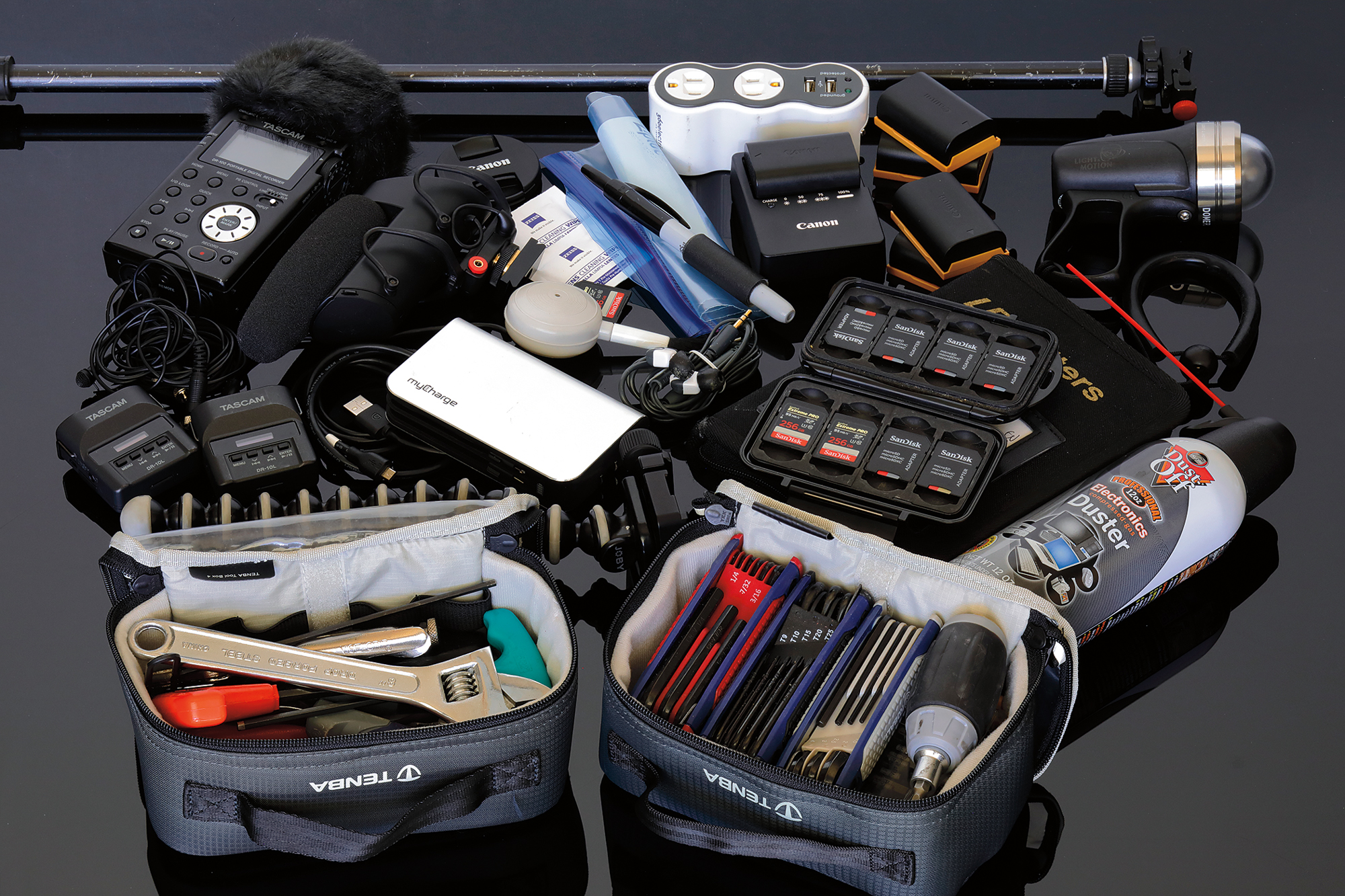Photography by Bruce Dorn and Stephanie Worstein
You often hear “It’s the artist, not the tool,” that really matters. While that may be true in some cases, things definitely get more complicated when we’re talking about photographers and their choice of camera equipment. At its foundation, photography is both an art and a mechanical craft, and craftsmen definitely benefit from having a variety of special-purpose tools at their disposal. I know I have.
After many years of professional experience, I put together specific tool kits for the various photographic challenges I tackle. We’ll take a look at how I prepare to go afield for a variety of professional tasks, but first a full disclosure on why you’ll see a lot of Canon equipment in the accompanying illustrations. While I have used and enjoyed all brands during my 45-year career, I’ve been committed to Canon since they released their first 3.1-megapixel DSLR in May 2000. Their decision to go with CMOS sensors was brilliant and their color science has improved with each new generation.
By 2005, Canon noticed my efforts at image creation and invited me to join their team as a Canon Explorer of Light. Being a Canon beta tester, I continue to be impressed by their optics, color science, weatherizing, battery life, and logical menus. Within the Explorer family of top-tier specialists in a spectrum of very narrow fields of expertise, I’m Canon’s general practitioner. I do a bit of everything to earn my daily bread: wildlife, landscape, wet work, aerials, travel, sheet metal, environmental portraiture, motorsports, light painting, documentary filmmaking, and vlogging, so I’m sharing a few examples of my various Canon kits. With a little imagination, it should be easy enough to look at my choices and visualize assembling something similar in your favorite brand.
SIZE MATTERS
The equipment I pack for any given task depends largely upon my method of travel. Whether by foot (or cycle), airline, or four-wheel drive, I can only carry what my mode of transportation will allow. I’ve purposefully listed these methods of transportation in order, from minimalist to carry-on to ultimate.
I’m tempted to skip the “by foot” concept since we usually travel by mechanized means, and because I fully agree with Edward Weston, one of the most innovative and influential masters of 20th-century photography. Mr. Weston famously said, “Anything more than 500 yards from the car just isn’t photogenic.” Hey, who am I to disagree?
And even though I’m pretty sure it was Abe Lincoln who once tweeted, “Hiking is for haters,” it would be wrong to disregard the many great photographic opportunities that await the tootsie-centric world traveler. To that end, I’ll include a minimalist kit perfect for hikers, bicyclists, and moto riders, too.
NATURE AND WILDLIFE
MINIMALIST If I’m in country that harbors a chance of wildlife sightings, I like to have a compact super-zoom camera at hand. The Canon G3 X isn’t pocket-sized, but it’s darn small for something with a motorized 24-600mm (35mm equivalent) zoom lens. That’s a stupefying range of focal lengths and nicely stabilized too. The 1-inch sensor is smaller than a micro 4/3 sensor but the quality is shockingly good; it’s more than adequate for professional use as long as huge blow-ups are not required. I became a believer in Canon’s G-Series camera lineup after extensive testing, but added the optional electronic viewfinder after struggling with the rear LCD while shooting swimwear on a white sand beach at midday.
MINIMALIST NATURE AND WILDLIFE KIT
This kit is built around a compact Canon G3 X. One pocket in my tactical pants can easily hold a spare SD card, a blower brush, lens wipes, a multi-tool, folding knife, an extra battery, and a Sharpie wrapped with 2 feet of gaffer tape.
CARRY-ON Given the opportunity to work out of a carry-on bag, I immediately step up to an interchangeable lens camera. Although there are many small-sensor interchangeable lenses on the market, I prefer to invest in lenses that cover the full 24x36mm frame. These full-sized lenses are large and heavy but there are a number of good size-conscious options available when it’s time to choose your camera body. In this version of my carry-on kit I selected a Canon EOS M5, an 11-24mm f/4L, and a 28-300mm f/3.5-5.6L IS. These two monsoon-rated lenses give me the full-frame equivalent of 18-480mm coverage in a small backpack that is overhead bin compatible. If I prefer full-frame for the day’s work, I can substitute a 50.6MP EOS 5DS R body. If I need a tripod, it’s my second personal item. When a carry-on isn’t possible due to security restrictions, I gate check and pray.
CARRY-ON NATURE AND WILDLIFE KIT
This kit usually includes two camera bodies that can share the same interchangeable lens. This image shows a 28-300mm lens on a mirrorless APS-C Canon EOS M5 and a 11-24mm wide-angle zoom on Canon’s full-frame 50.6MP 5DS R. For high-quality sound, I use a Shure LensHopper digital audio recorder on a GorillaPod. A Gitzo tripod fitted with an Arca-Swiss Monoball ballhead helps when I need to handhold my Lee Filters neutral density grads.
ULTIMATE I’m assuming that this is a self-drive kit and that effectively means my vehicle is my gadget bag. Since nature and wildlife work seldom requires the extensive grip and electrical capabilities of my Ford F250, I’ll generally use my Jeep JKU for this application: both are production-ready. Keeping the same two lenses listed in the carry-on kit as a foundation (each one mounted on a work-ready EOS 5D Mark IV) for general use, I’ll include a smokin’ fast Canon EOS 1D X Mark II for rapid-paced wildlife capture. With plenty of camera options covered, I add in a full set of tilt-shift (T/S) lenses (17mm f/4, 24mm f/2.8, 35mm f/1.4, and 90mm f/2.8) and several super telephotos (200-400mm f/4, 400mm f/2.8, and 600mm f/4). Since I shoot as much 4K cine as I do stills, all cameras (and the long lenses) are fitted with Bogen/Gitzo/Manfrotto/ Sachtler cine-style quick-release plates to make them compatible with my Sachtler FSB-8 fluid heads. These heads are mounted on Gitzo carbon-fiber tripods.
An ultra-light jib arm, an all-terrain dolly, and several waterproof Light & Motion Stella 5000 LED lights round out my Ultimate Nature and Wildlife Kit.
ULTIMATE NATURE AND WILDLIFE KIT
This kit has wheels. I’ve outfitted my Jeep Wrangler JKU to haul a huge assortment of photographic tools. In this shot, you can see three Canon HDSLRs with dedicated super telephotos (200-400mm, 400mm, 600mm), three Gitzo carbon fiber tripods with Sachtler FSB-8 cine fluid heads, eight GoPros, a carbon fiber splash housing, a full kit of tilt/shift lenses, and an array of wide and mid-range zooms. There’s a drone and a gimbal rig buried in there as well.
Inset: This drawer in my JKU contains a pile of different possibles bags. These rectangular accessory bags by Tenba have transparent sides so I can quickly identify their contents. Each pouch has a specific purpose and place in the drawer.
ENVIRONMENTAL PORTRAITURE AND LIGHT PAINTING
MINIMALIST Environmental portrait photography, the way I do it, can be accomplished with focal lengths from wide-angle (to help relate the subject to their environment) to short telephoto (to isolate the subject within their environment). The availability of a large maximum aperture is helpful as well. The pocketable Canon G5 X with the aforementioned 1-inch CMOS sensor offers the full-frame equivalent of 24-100mm at a wide-open aperture of f/1.8-2.8. Done deal. If I want to add a battery-powered flash unit to create dramatic lighting effects or simply a touch of fill light, I utilize a Canon radio-synchronized 600EX II-RT speedlite and its matching ST E3 RT speedlite transmitter. This flash is actually a bit bigger than the camera itself, but when used wisely, allows truly professional portrait lighting.
MINIMALIST ENVIRONMENTAL PORTRAITURE AND LIGHT PAINTING KIT
This kit is based around a Canon G5 X and a Canon 600EX II-RT speedlite. To be able to create interesting off-camera flash work, I also carry Canon’s matching ST E3 RT speedlite transmitter. A small handful of spares and maintenance bits round out the compact kit.
CARRY-ON I’ll most likely select a full-frame camera body, either the 30MP Canon EOS 5D Mark IV or the 50.6MP 5DS R. Following the same focal length philosophy outlined above, I’ll have the camera fitted with an EF 24-105mm f/4L IS II. To add even more flattering focal length compression options, I’ll probably have a second body with an EF 70-200mm f/2.8L IS II. This is my “meat” lens and the one that always produces images that sell.
Great environmental portraiture is based upon great light and sometimes nature just doesn’t deliver. If push came to shove and I had to choose between an extra camera and lens or some good portable lights I’d choose the lights every time. I’m a huge fan of Canon’s wireless speedlites but since they don’t help when concurrently shooting video I’m increasingly using compact, waterproof, battery-powered, daylight-balanced continuous LED lights. Whichever I choose, speedlite or LED, I carry at least three. These same units are equally useful for light painting.
CARRY-ON ENVIRONMENTAL PORTRAITURE AND LIGHT PAINTING KIT
This kit generally includes two full-sized bodies and a couple of carefully matched lenses. In this illustration, I show a 24-70mm f/4L IS mounted on a Canon 5DS R and a 70-200mm f/2.8L IS II on a Canon 5D Mark IV. I’ve added two more Canon 600EX II-RT speedlites so I can do three-point lighting and much more.
CARRY-ON ENVIRONMENTAL PORTRAITURE AND LIGHT PAINTING KIT VIDEO CAPTURE
If an assignment prioritizes video capture over stills, I substitute compact battery-powered, 5600º Kelvin, Light & Motion Stella LEDs for my usual complement of Canon Speedlites. They can run off of their self-contained lithium-ion battery packs for 90 minutes at full power and much longer at half or quarter power. And they’re submersible to 300 feet, too.
ULTIMATE Environmental portraiture can be as simple as capturing a handsome likeness in beautiful available light, but it can become very challenging when the atmospheric conditions are not cooperating. As a professional, I’m not allowed to fail or reschedule— I must get the shot, every time. Harsh midday sun? No problem. Neither the conditions nor the camera choice really matter.
Once again, at this level, my vehicle becomes my gadget bag. I can carry lots of esoteric gear and I most certainly do. My vintage Ford F250 Super Duty has, over the years, become an excellent rolling studio. It has dedicated batteries and sine wave inverters capable of providing plenty of silent AC power to run my ARRI LED theatrical spotlights and soft lights when shooting cinema. If I’m only shooting stills, and sound isn’t an issue, a 3,000-watt Honda inverter/generator provides slightly noisier power for everything from studio strobes to wind machines.
I also carry plenty of mountain-leg light stands, black cutters (for subtractive lighting), and a couple of 6×6-feet silks (for diffusion or bounce).
ULTIMATE ENVIRONMENTAL PORTRAITURE AND LIGHT PAINTING KIT
When not transporting vicious poisonous snakes, my production truck often contains a full complement of Hollywood-grade lighting instruments. These ARRI LED units can create sunlight, moonlight, lightning, or even a flickering campfire.
Possible Bags
No matter what I carry, I always have at least one “possibles bag” in my possession. The mountain men and early explorers of the American West coined the term, and it refers to a rectangular satchel or pouch that was carried everywhere and always. It was meant to transport and protect “every possible thing” that a hunter might need while afield. The lists below include only those items uniquely required to support my photography and don’t include the usual survival and comfort items.
MINIMALIST POSSIBLES BAG
Blower/brush combo
Multiple pre-moistened lens cleaning tissues
5/32-inch L-type Allen wrench
Spare battery
Extra lens cap
Spare SanDisk Extreme Pro card, 256GB
Multiple quart-sized Ziploc freezer bags*
A couple of feet of gaffer tape wrapped around a Sharpie
CARRY-ON POSSIBLES
BAG Everything from the Minimalist Possibles Bag
Multiple outlet AC adapter with USB outlets
Camera battery charger
Four more batteries
Multiple USB cables
Light & Motion Stella 1000 LED floodlight
Lee Filters 4×6-inch hard grad acrylic neutral density filter
Rechargeable battery pack for recharging my iPhone or tablet
Waterproof, color-correct LED light for light painting, fill light, and campfire interviews
Stand-alone shotgun microphone with built-in digital audio recorder
GorillaPod with an Arca-Swiss quick-release clamp for the shotgun microphone
Shure LensHopper shotgun mic/digital audio recorder combo
Shure earbuds to monitor camera audio
ULTIMATE POSSIBLES BAG (PELICAN CASE SIZE)
Everything from the Minimalist and Carry-on Possibles Bags
More of all the expendable items
Camera-quality canned, compressed air
A stand-alone digital recorder with media and spare batteries
Two sets of lavalier-style digital audio recorders
A comprehensive tool kit in metric and fractional sizes
Small microphone boom
* The quart-sized, freezer-grade Ziploc bag gets filled with millet seed to act as a soft camera support. And then I feed the birds when I’m done. Gotta pay your on-camera talent, right?
SUMMARY
Remember, buying a bunch of pro-level photo gear doesn’t make you a professional photographer. Master the equipment you already own but note the times you reach for a tool that isn’t there. Trust me, you’ll know when it’s time to add it to your kit.



